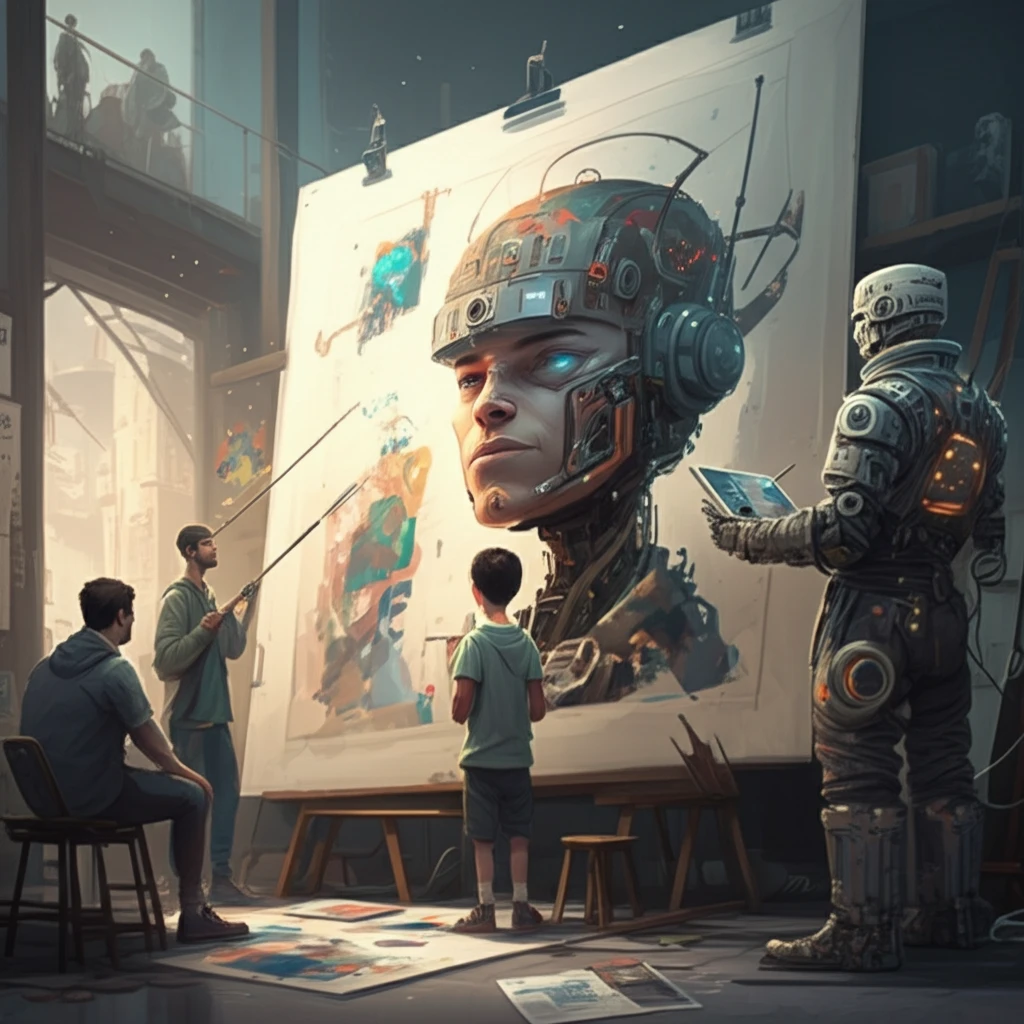
AI vs. Artists: Can Generative AI Truly Democratize Creativity?
"New research explores how AI impacts market equilibrium, revealing surprising benefits for creators and consumers alike."
Generative artificial intelligence (AI) is rapidly evolving, demonstrating an impressive ability to produce creative content that rivals human output. With greater efficiency and lower costs, AI tools are transforming various industries, including the art market. But this groundbreaking technology has also sparked debates about its potential to displace human creators, raising concerns about job security and the value of human artistry.
In light of these discussions, a recent study delves into the impact of generative AI on market equilibrium. By analyzing data from China's leading art outsourcing platform, researchers have uncovered intriguing insights into how AI is reshaping the creative landscape. The study overcomes the challenge of causal inference by identifying a natural experiment: an unanticipated leak of an advanced image-generative AI. This leak precipitated a notable reduction in the production costs of anime-style images, providing a unique opportunity for analysis.
The research offers a counterintuitive perspective on the role of AI in creative markets. While many fear that AI will lead to job displacement and devaluation of human skills, this study suggests that AI can actually benefit all stakeholders across the platform economy. Consumers gain access to cheaper services, while human creators and the platform itself experience increased orders and revenue. This article explores the findings of this study and discusses the potential implications of generative AI for the future of creativity and the art market.
How Does Generative AI Reshape the Art Market?

The study reveals that the advent of generative AI led to a significant shift in market dynamics. Specifically, the average prices for anime-style images plummeted by 64%. This price reduction reflects the increased efficiency and lower production costs associated with AI-generated content. However, contrary to fears of market collapse, the study also found that order volume surged by 121%, and overall revenue increased by 56%.
- Lower prices: AI significantly reduces the cost of creating art.
- Increased accessibility: Lower prices open up the market to more consumers.
- Higher order volume: The total number of art commissions increases dramatically.
- Boosted revenue: Overall earnings for artists and platforms can rise despite lower prices.
Embracing AI: A Win-Win for the Art World?
This research highlights the potential of generative AI to benefit all stakeholders across the platform economy. By embracing AI tools and incorporating them into their workflows, artists can increase their productivity, attract new customers, and ultimately thrive in a rapidly evolving market. Generative AI is not a threat to human creativity; it is a tool that can empower artists and democratize access to art for everyone.
